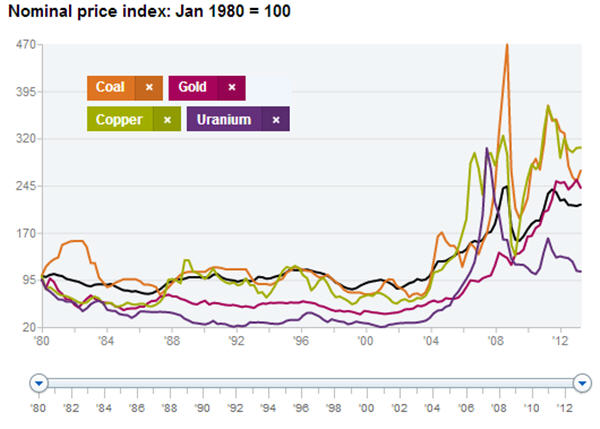Don’t sound the death knell just yet: The resource ‘supercycle’ may not be breathing its last breath.
The resource sector’s period of sharp price rises and heightened volatility is “alive and well,” say analysts of the business and economics research arm of McKinsey & Company.
“Rumors of the supercycle’s death are greatly exaggerated,” authors of the 2013 Trends Survey write. “Despite recent falls, commodity prices are still near their levels of early to mid-2008, just before the global financial crisis hit.”
By historical standards, resource prices are still high – even as the global economy slowly pulls itself out of recession.

McKinsey uses an interactive tool to track movements in commodity prices over time [Modified screenshot] | Try the tool yourself here.
Copper prices grew by 344%.
The authors also note that as supply becomes “increasingly unresponsive to demand,” price volatility is not going to disappear
Ramping up supply will be a challenge but not because of any near-term absolute shortage of natural resources, the researchers write. Rather, three ‘persistent forces’ are making it difficult to increase supply, namely “a challenging geology that makes it hard to extract resources.”
The researchers also challenge the notion that demand from emerging markets, particularly China, are driving up prices. McKinsey’s Basic Materials Institute finds that while this factor is important, the changing cost of supply is a big piece of the puzzle.
“In the future […] demand from China, more challenging access to supply, logistical and skills challenges, and the incorporation of environmental costs—will all shape metals prices,” the report’s executive summary reads.
2 Comments
John
And this begs the question of how mining companies have managed to manage their cost structures so poorly that they even with still elevated prices are not able to make a profit.
Adam
I agree with John. Also, how has the cost of exploration, extraction and processing changed over time? i.e. even though the commodity price may be up, but how much is it costing mining companies to produce?